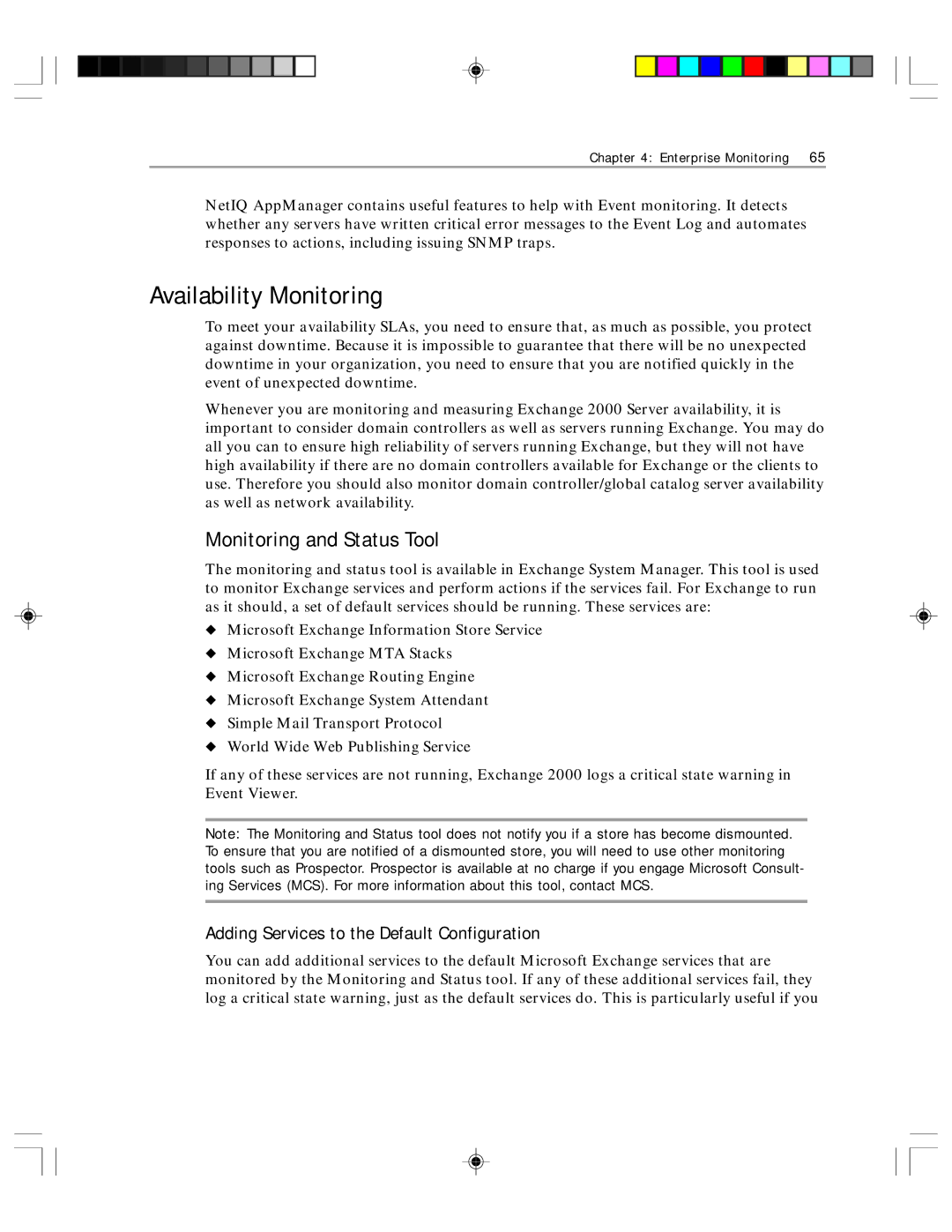
Chapter 4: Enterprise Monitoring | 65 |
NetIQ AppManager contains useful features to help with Event monitoring. It detects whether any servers have written critical error messages to the Event Log and automates responses to actions, including issuing SNMP traps.
Availability Monitoring
To meet your availability SLAs, you need to ensure that, as much as possible, you protect against downtime. Because it is impossible to guarantee that there will be no unexpected downtime in your organization, you need to ensure that you are notified quickly in the event of unexpected downtime.
Whenever you are monitoring and measuring Exchange 2000 Server availability, it is important to consider domain controllers as well as servers running Exchange. You may do all you can to ensure high reliability of servers running Exchange, but they will not have high availability if there are no domain controllers available for Exchange or the clients to use. Therefore you should also monitor domain controller/global catalog server availability as well as network availability.
Monitoring and Status Tool
The monitoring and status tool is available in Exchange System Manager. This tool is used to monitor Exchange services and perform actions if the services fail. For Exchange to run as it should, a set of default services should be running. These services are:
◆Microsoft Exchange Information Store Service
◆Microsoft Exchange MTA Stacks
◆Microsoft Exchange Routing Engine
◆Microsoft Exchange System Attendant
◆Simple Mail Transport Protocol
◆World Wide Web Publishing Service
If any of these services are not running, Exchange 2000 logs a critical state warning in Event Viewer.
Note: The Monitoring and Status tool does not notify you if a store has become dismounted. To ensure that you are notified of a dismounted store, you will need to use other monitoring tools such as Prospector. Prospector is available at no charge if you engage Microsoft Consult- ing Services (MCS). For more information about this tool, contact MCS.
Adding Services to the Default Configuration
You can add additional services to the default Microsoft Exchange services that are monitored by the Monitoring and Status tool. If any of these additional services fail, they log a critical state warning, just as the default services do. This is particularly useful if you
